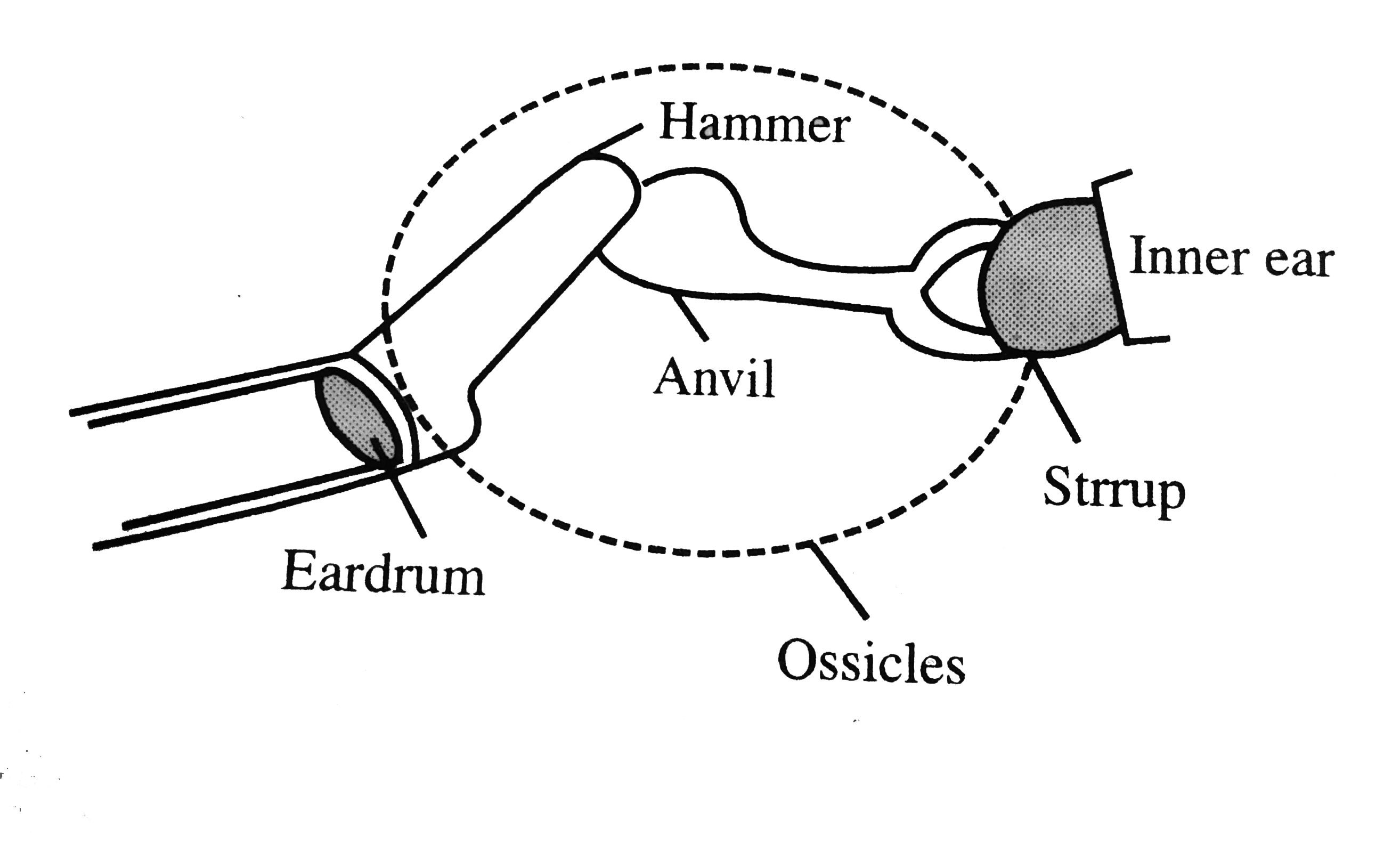Internal endoskeleton of starfish is made up of calcareous plates called ossicles. Ossicles are derived from
ectoderm
mesoderm
endoderm
both 1) and 3)
The correct Answer is:B
To determine the origin of ossicles, the calcareous plates that form the internal endoskeleton of starfish, we can follow these steps:
1. Understand the Structure of Starfish:
- Starfish belong to the phylum Echinodermata, which is characterized by their unique body structure, including an internal endoskeleton made of calcareous plates known as ossicles.
2. Identify the Function of Ossicles:
- Ossicles serve important functions such as providing rigidity and protection to the starfish's body. They are embedded in the dermis of the body wall and are immovable.
3. Know the Germ Layers:
- In embryonic development, organisms typically have three primary germ layers: ectoderm, mesoderm, and endoderm. Each layer gives rise to different tissues and structures in the body.
4. Determine the Origin of Ossicles:
- In echinoderms like starfish, ossicles are derived from the mesoderm. This is the layer responsible for forming structures such as bones, muscles, and the internal skeleton.
5. Select the Correct Option:
- Given the options: ectoderm, mesoderm, endoderm, and both 1 and 3, the correct answer is mesoderm (Option B).
Final Answer:
The ossicles of starfish are derived from the mesoderm.
---
- Starfish belong to the phylum Echinodermata, which is characterized by their unique body structure, including an internal endoskeleton made of calcareous plates known as ossicles.
- Ossicles serve important functions such as providing rigidity and protection to the starfish's body. They are embedded in the dermis of the body wall and are immovable.
- In embryonic development, organisms typically have three primary germ layers: ectoderm, mesoderm, and endoderm. Each layer gives rise to different tissues and structures in the body.
- In echinoderms like starfish, ossicles are derived from the mesoderm. This is the layer responsible for forming structures such as bones, muscles, and the internal skeleton.
- Given the options: ectoderm, mesoderm, endoderm, and both 1 and 3, the correct answer is mesoderm (Option B).
The ossicles of starfish are derived from the mesoderm.
Topper's Solved these Questions
Similar Questions
The endoskeleton of cell is made up of
View SolutionRusting of an article made up of iron is called
View SolutionIn chondrichthyes endoskeleton is made up of which tissue?
View SolutionThe calcareous ossicles in echinoderms form the
View SolutionAssertion : The exoskeleton of arthropods is made up of complex polysaccharide called chitin.
Reason : Plant cell walls are made of cellulose.
View SolutionEndoskeleton of fishes are made up of cartilage and bone. Classify the following fishes as cartilaginous or bony : Torpedo, sting ray,Dog fish,Rohu, Angler fish, Exocetus.
View SolutionAll matter is made up of tiny particles called ______ or ______
View Solutionthe center of starch grain is called hilum it is made up of
View SolutionThe outermost layer of endosperm in monocots made up to proteins is called
View Solution
When a sound wave enters the ear, it sets the eardrum into oscillation, which in turn causes oscillation of 3 tiny bones in the middle ear called ossicles. This oscillation is finally transmitted to the fluid filled in inner portion of the ear termed as inner ear, the motion of the fluid disturbs hair cells within the inner ear which transmit nerve impulses to the brain with the information that a sound is present. The theree bones present in the middle ear are named as hammer, anvil and stirrup. Out of these the stirrup is the smallest one and this only connects the middle ear to inner ear as shown in the figure below. The area of stirrup and its extent of connection with the inner ear limits the sensitivity of the human ear consider a person's ear whose moving part of the eardrum has an area of about 50mm2 and the area of stirrup is about 5mm2. The mass of ossicles is negligible. As a result, force exerted by sound wave in air on eardum and ossicles is same as the force exerted by ossicles on the inner ear. Consider a sound wave having maximum pressure fluctuation of 4×10−2Pa from its normal equilibrium pressure value which is equal to 105Pa. Frequency of sound wave in air is 332ms. Velocity of sound wave in fluid (present in inner ear) is 1500ms. Bulk modulus of air is 1.42×105Pa. Bulk modulus of fluid is 2.18×109Pa.
Q. This person (without hearing aid machine) is sitting inside a busy restaurant where average sound intensity is 3.2×10−5Wm2. How much energy in the form of sound is taken up by the person in his meal time of 1 h?
View Solution
